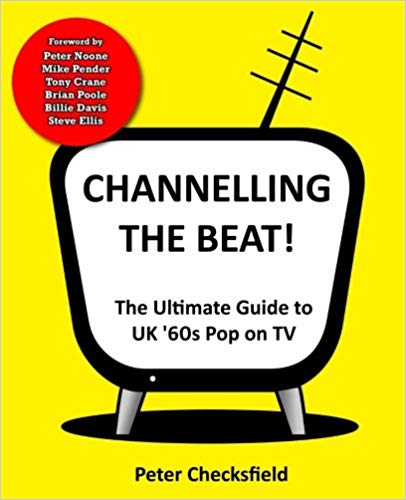
Guide to British Music of the 1960s
August 2018
Book Review: Channelling The Beat by Peter Checksfield

While there are many artists covered in the book it is not exhaustive. It can be argued about who should and who should not be included. The author has attempted to focus on British beat and pop music and therefore excludes later acts that could be classified as rock or earlier acts that may be viewed as "middle of the road" or "boy next door types". You have to draw a line somewhere.
Throughout the book performances that still exist are highlighted in bold. It seems incredible today that so many legendary performances no longer exist and the few that do crop up on YouTube or, from time to time, on BBC4 or Yesterday channels. However, film and video tape was expensive in the 1960s and therefore tapes were reused rather than archived for posterity. Furthermore, it seems that no-one thought at the time that these performances would have great historic value in the future. Those performances that exist today can be viewed as having escaped rather than having been saved!
As many artists were regularly on television and not just in the UK there is an immense amount of detail here. The Beatles section runs to around ten pages with only 1-2 lines for each performance. The very first Beatles TV appearance is still available. As the book notes, some of the Cavern performance from 22 August 1962 was recorded for the show Know the North but it was not broadcast until November 1963 on Scene at 6.30. This is not only the first TV appearance of the Beatles, playing Some Other Guy, but the only footage of the Beatles playing at the Cavern, the venue which is always linked to them.
Curiously, the Jimi Hendrix Experience is excluded although this can be claimed to be a British group, conceived in London and two-thirds of the band were British. If so, it would have mentioned the infamous Happening for Lulu show on the BBC (although Hendrix is referred to here in the Lulu section), one piece of the tape the BBC is pleased it did not wipe. After playing current single Voodoo Chile (Slight Return) the band started playing Hey Joe before stopping and switching to an instrumental version of Sunshine of Your Love in tribute to Cream. As it was live TV the BBC were unable to do anything and they must be so pleased they did not now!
This is a book to dip into from time to time. A glance at the Action shows just how few TV appearances the band made despite their powerful live reputation. Again, only one clip survives of a mimed version of I'll Keep On Holding On.
The book is a treasure trove and great fun to glance at from time to time. It is a worthy addition to 1960s music reference works.